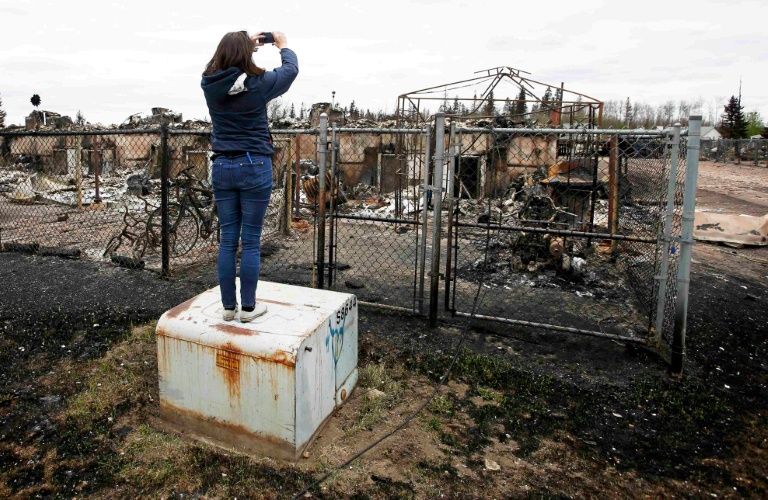-
Tips for becoming a good boxer - November 6, 2020
-
7 expert tips for making your hens night a memorable one - November 6, 2020
-
5 reasons to host your Christmas party on a cruise boat - November 6, 2020
-
What to do when you’re charged with a crime - November 6, 2020
-
Should you get one or multiple dogs? Here’s all you need to know - November 3, 2020
-
A Guide: How to Build Your Very Own Magic Mirror - February 14, 2019
-
Our Top Inspirational Baseball Stars - November 24, 2018
-
Five Tech Tools That Will Help You Turn Your Blog into a Business - November 24, 2018
-
How to Indulge on Vacation without Expanding Your Waist - November 9, 2018
-
5 Strategies for Businesses to Appeal to Today’s Increasingly Mobile-Crazed Customers - November 9, 2018
Alberta fire grew less than expected
Alberta’s premier will get a first look at the devastated parts of Canada’s oil sands town of Fort McMurray Monday after the fire stabilized to the point where officials are beginning the next phase of the government’s plan to get residents back home.
Advertisement
Chad Morrison of Alberta Wildfire said last night he was “very happy” and called it great firefighting weather after some rain fell and cooler temperatures were on the way.
With the weather expected to stay colder over the next three or four days, firefighters should be able to put out hot spots.
Nevertheless, the wildfire outside of Fort McMurray could take quite some time to douse as fire control officials said it is not uncommon for a fire of this size to burn for months.
Trudeau added he is in contact with Premier Rachel Notley about when it would be best for him to visit Fort McMurray.
Ms Notley retweeted the picture and wrote: “Here’s hoping for much more!” As officials work to identify the origin of the wildfire with drones later this week, scientists believe that weather patterns connected to El Niño have likely played a role. according to NASA, the area has received less rainfall than average, while satellite imagery shows warmer than usual ground temperatures leading up to May.
Notley said about 12,000 evacuees have been airlifted from oil sands mine air fields over the past two days, and about 7,000 have left in highway convoys escorted by police.
So far, more than 1,600 homes have been lost, but there have been no reports of deaths or injuries. However, Notley said she regretted the deaths of two people who were killed as their vehicle struck a truck while fleeing the blaze. Fifteen-year-old Emily Ryan and her stepmother’s nephew, Aaron Hodgson, died in the accident.
Thousands of evacuees are camped out in nearby towns but stand little chance of returning soon, even if their homes are intact.
The gas has been turned off, there’s no water, but the good news, according to MP David Yurgida, is that major infrastructure survived the wildfire.
More than 100,000 Fort McMurray residents and people in surrounding areas were forced to evacuate last week.
Several government officials, Fort McMurray’s fire chief, and reporters traveled to Fort McMurray Monday to survey the damage.
The fire which is still burning out of control in some places and the massive smoke screen it created has almost shuttered Alberta’s famed oil sands which account for almost one-third of Canada’s oil output. Its workers largely live in Fort McMurray where some neighborhoods have been destroyed.
“The boreal forest is a fire-dependent ecosystem”, said Bernie Schmitte, forestry manager in Fort McMurray at a news conference earlier this week. “We’re really working hard on that, it’s a complicated process”, he said.
He also said that he has been in contact with oil companies about how this is affecting the economy. If the blaze can’t be stopped, it may reach neighboring province of Saskatchewan.
The fires also move slower than was previously anticipated.
Thousands have been seeking shelter at receptions centres in Lac La Biche and other towns south of Fort McMurray.
Jihad Moghrabi, a spokesman for Lac La Biche County, said 4,400 evacuees came through The Bold Centre sports venue.
Advertisement
At the centre, tables were piled with clothes, towels and other items.





























